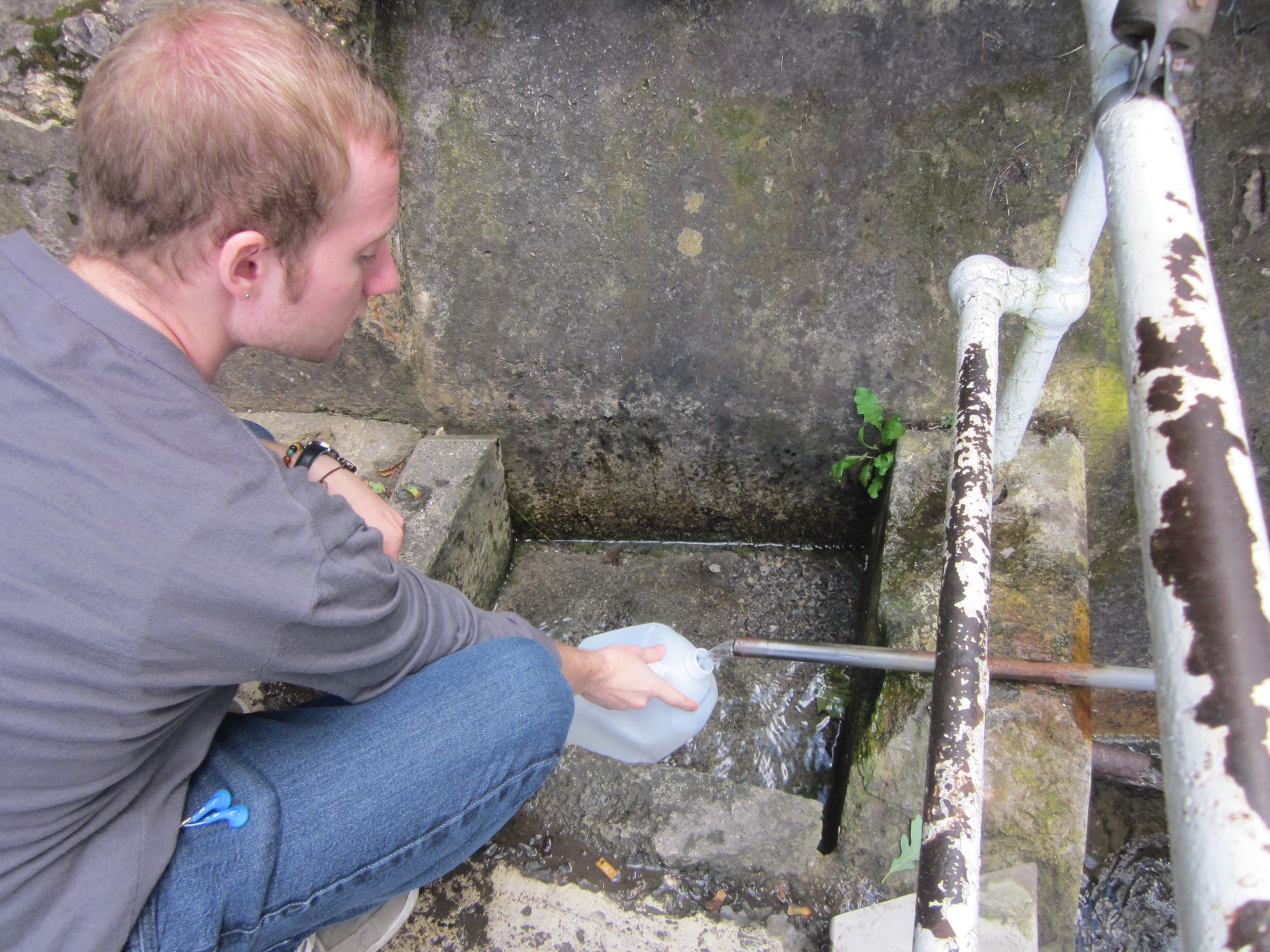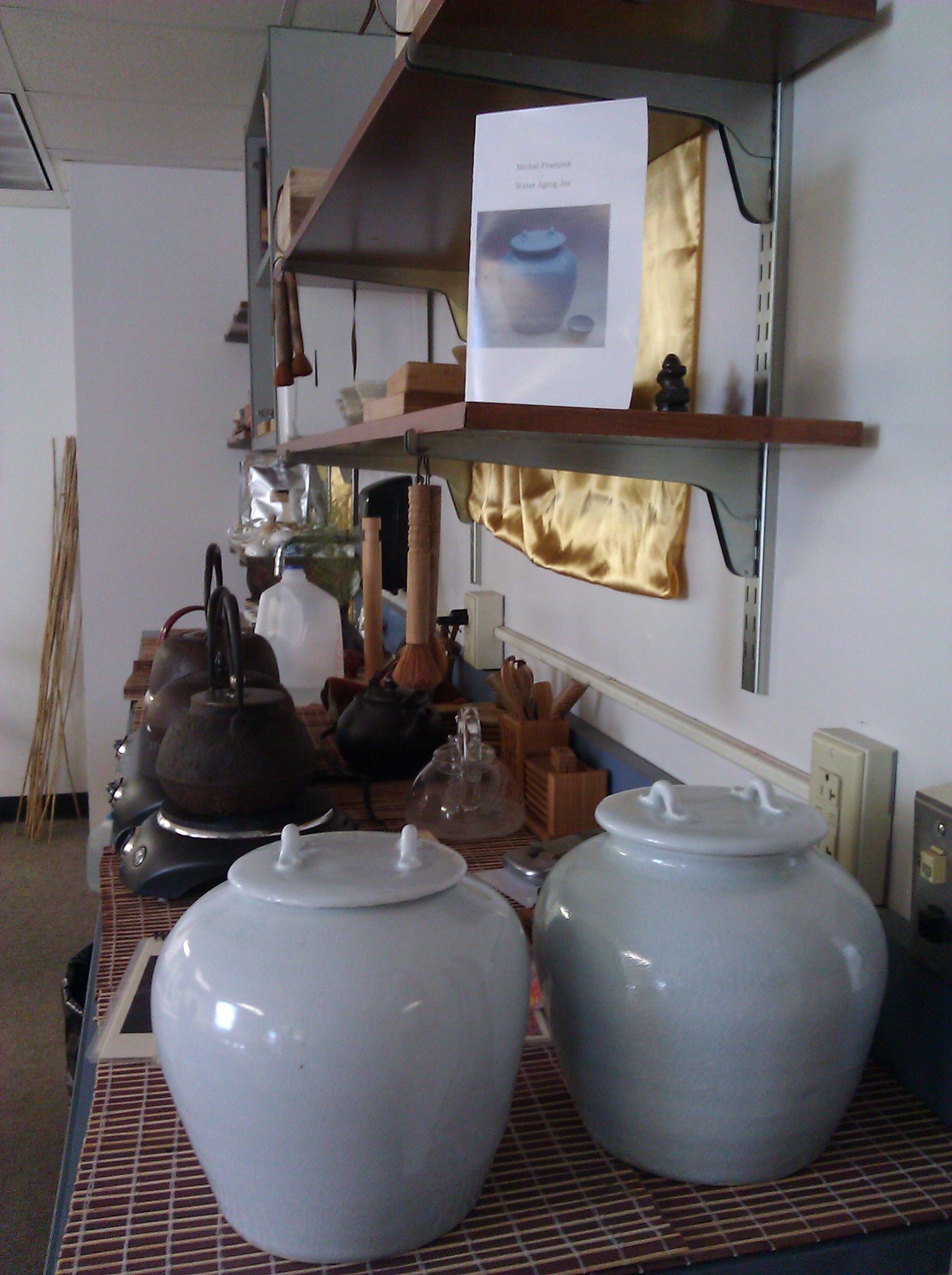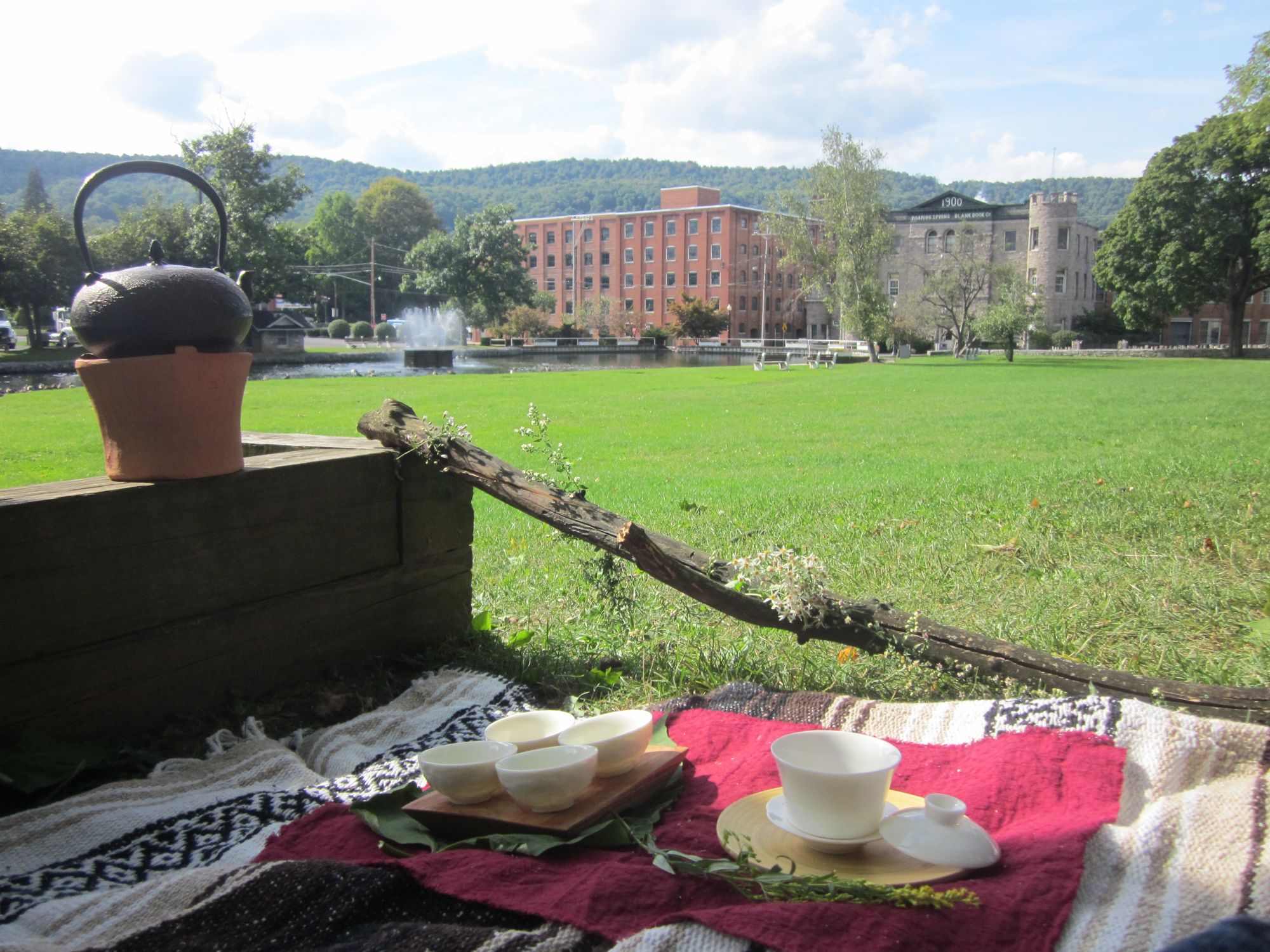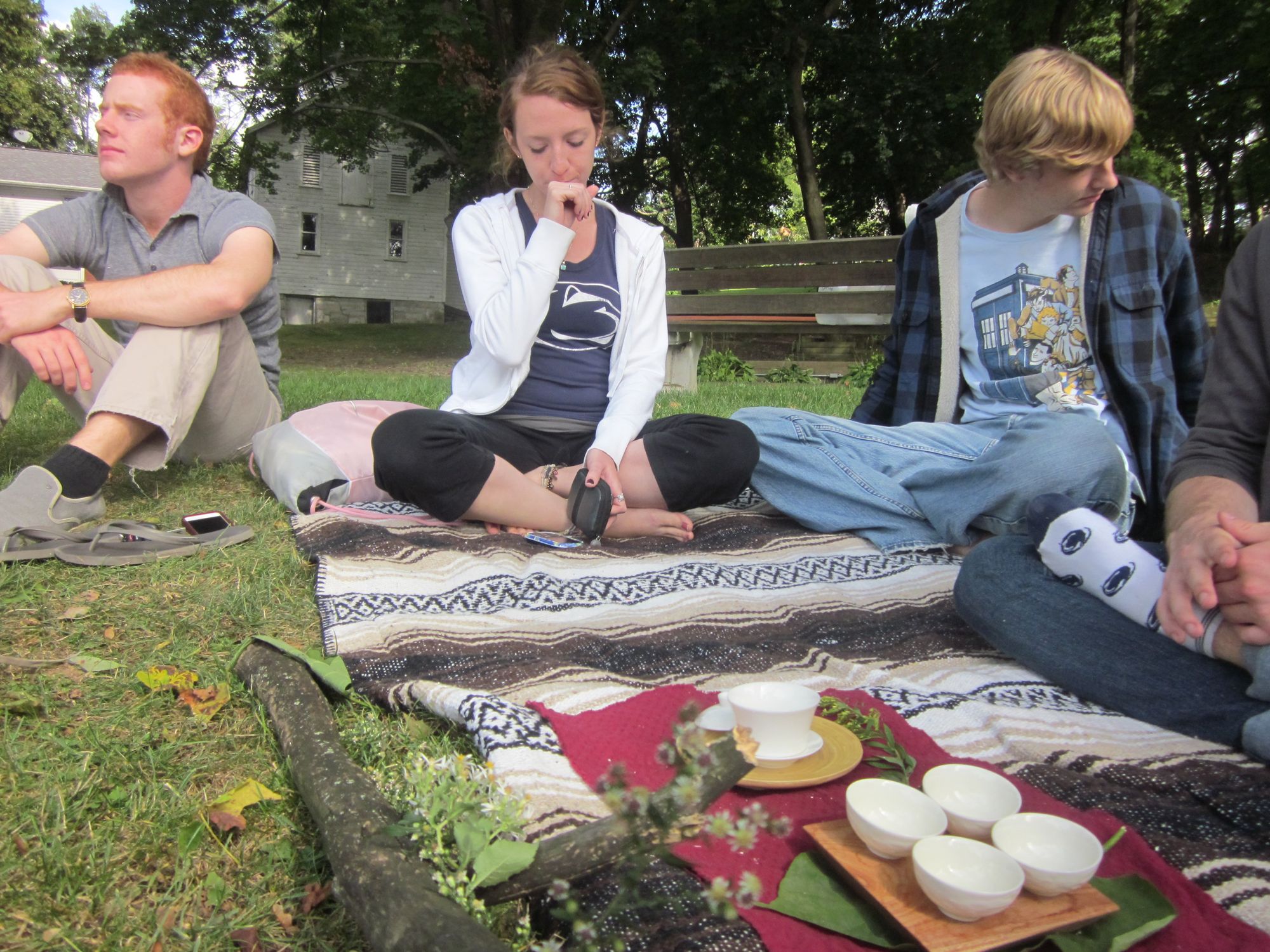Sourcing Water with a ChaXi
What water you use to brew your tea has a huge effect on its flavor, as has been repeated ad nauseum in books and blogs as a source of wisdom, improvement, and importance.
And it does.
Spring water isn’t magical (so they say), but a proper balance of minerality, ph, and provenance makes a huge difference to the quality of our favorite leafy infusion.
So it should come as no surprise that the Tea Institute sources our own water from near by Roaring Spring, PA. Once (soon to be twice) a semester, a group of our intrepid researchers and artists ventures out to fill ~100 gallons of water. That’s half a ton if you’re keeping count. The Institute will use that in about a month and a half; not a very water intensive operation really, until you think we’re ingesting the great majority of it!

Most of that water is simply stored and boiled with active bamboo charcoal from Taiwan. Our tetsubans give the water a slight sweetness (free iron cations bind with calcium which activates sweet receptors… so ghost sweetness… kinda…) and a more present clean mouth feel.

A small portion of our water is put into ageing jars for salt-ion exchange experiments; the aged water is amazingly light and airy. We can only age about 2 gallons at a time, and our current batch has been ageing for more than 4 months!
This is only used for the most special of tea!

Driving out to the spring one fine summer day, we made ChaXi in view of the spring and old paper factory that still bears the towns name.
We boiled the spring water with 3 pieces of our LongYan Charcoal, the aroma filled the air as we carried the jugs back to the car. With only a little too much work, the water was boiling in about 40 Minutes. Most of that time was simply getting the super dense charcoal lit! (it really just requires a blow torch)
The ChaXi had a simple branch warped with a string of late bloom flowers, and I used my white porcelain travel set on wooden blocks set atop large green leaves. We brewed our ‘palace grade Dian Hong’ for such a event.

I would call this a success, but I’m still at 0 Okapi’s for Pennsylvania.
Looks like I need to step up my tracking game.
Migrated Comments
Bev
Jason,
Fascinating post (and blog) here. I’m especially interested in your aging water experiments and would love to know more. What is this salt-ion exchange? Is it a function of simply the aging process, or does the container the water is stored in have a part to play? The storage jars you have pictured here are beautiful. From the photo it looks like a celadon type of glaze? Is it glazed inside as well as outside? I have read some about the benefits of aging water before and my interest has long been piqued. Have searched for a suitable vessel to age water in, but this is where I find myself stuck. I have yet to see or hear of any “traditional” vessels specifically for aging water, aside from Korean-made ones (which are unglazed, I think??). Any additional info on this would be most appreciated. Thank you, Jason.
Jason's Reply
Dear Bev,
Great to hear from you!
Water ageing is something no one seems to know a whole lot about…
The salt-ion exchange is between the spring water (must be spring!) and the clay + glaze of the storage jar. It’s very hard to measure and we’re not even sure which salts we should be looking at yet. These experiments require a trace element HPLC and lots of time to age the water!
But we do know that aging water has consistent and positive effects. We are using Song-style celedon by Michel François, and we will soon have a couple of Korean Ongi’s ageing water as well (some are glazed, some not, but the un-glazed will seep a little)!
Hope this helps!
– Jason